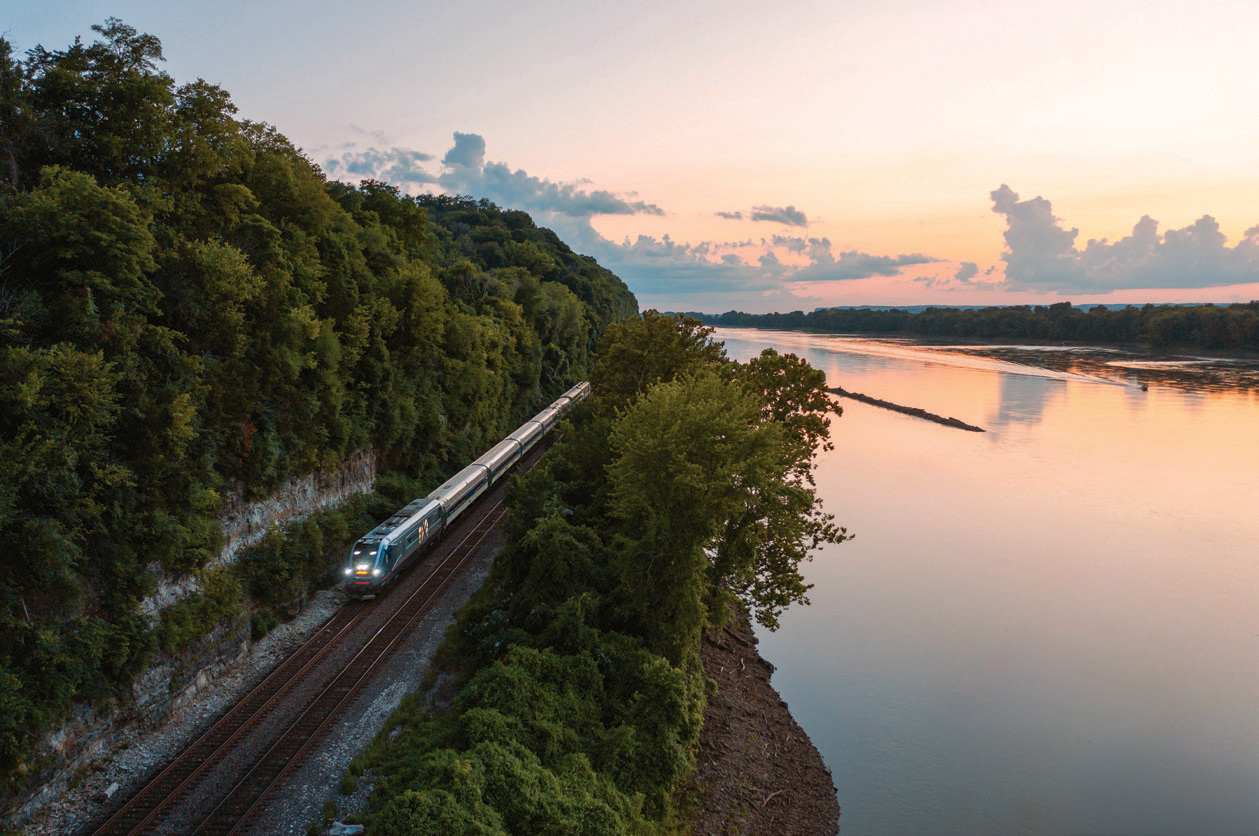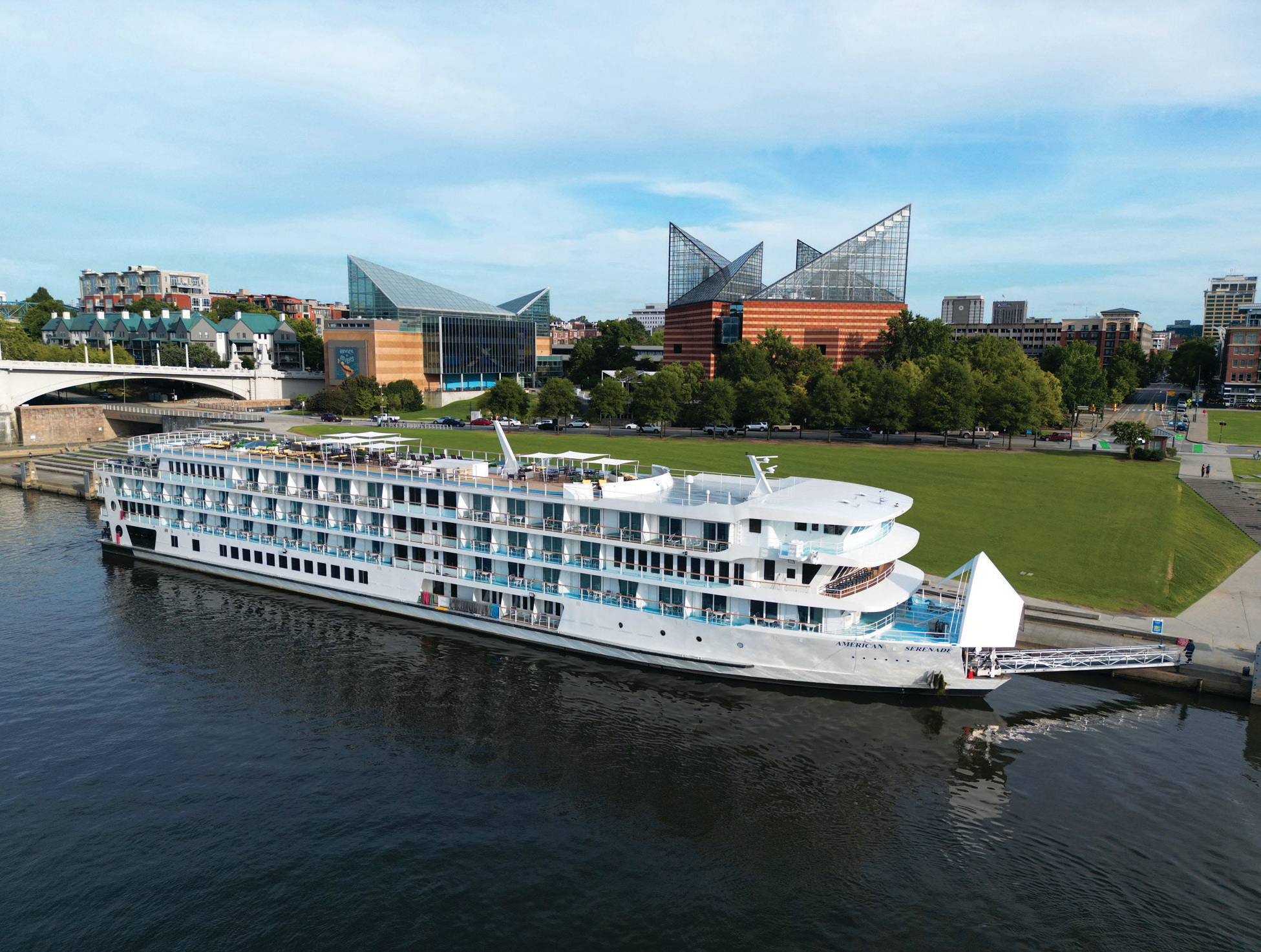Think about your last vacation. What do you remember? Did you hurry from one activity or place to another, getting a bird’s-eye view of too many things to really enjoy the journey?
If so, there’s good news. Use 2024 to do something different: exploring iconic highways, riding the rails to multiple destinations or boarding a riverboat on the country’s waterways.
“There’s a growing trend called ‘slow tourism,’ a chance to enjoy the journey, make memories, eat like a local, participate in experiences and discover the heart of a destination,” says Berkeley Young, president of Young Strategies Inc., a tourism research and consulting firm that works with destinations across the country. “You can travel by road, rail or boat; set your own pace; and create lasting memories — all without a passport.”

SheBuysTravel Founder and CEO Kim Orlando says she sees an increase in domestic travel for families, girls getaways, affinity groups and multiple generations.
“Domestic destinations are packed with experiences that range from riverboat cruising to road trips, and it’s usually more affordable than traveling overseas,” she says. “Vacation varieties are endless: mountains, desert, oceans, lake life. Busy cities and charming small towns offer travelers diverse cultural experiences and cuisines.”
Orlando says that traveling domestically has many advantages. “The language, roads and monetary systems are familiar, and time differences are not as drastic, giving you more fun time in your destination and less stress. You can literally hop in your car and go.”
Asphalt icons
When you ask people about America’s iconic drives, three or four big names come to mind, depending on where you live: The Pacific Coast Highway from Dana Point, California, to Leggett, Washington; historic Route 66 from Chicago to Santa Monica/Los Angeles; and U.S. 1 on the East Coast from Key West, Florida, to Fort Kent, Maine.
“Taking a road trip along any of America’s iconic highways opens up a whole world of itineraries, regardless of where you live and what you enjoy,” Young says. “Whether you take a long weekend or an extended trip, consider exploring some of the country’s more unusual and diverse regions defined by their distinctive highways.”
Young says that choosing a highway route rather than a connect-the-dots system of interstates can make for a more relaxing vacation and a chance to learn by getting off the interstate and enjoying the journey.
Ride the rails
With more than 21,400 miles of routes and more than 500 destinations across 46 states and parts of Canada, travel via Amtrak connects people to big cities, small towns, national parks, historic sites, popular travel destinations and off-the-beaten path adventures.
“Train travel can be a good alternative to driving or flying, and these days, customers have many options when taking a trip by rail,” says Kimberly Woods, senior public relations manager at Amtrak’s Washington, D.C., office. “Diverse destinations and the variety of routes and accommodations broaden choices whether you’re traveling with children, as a couple, solo or with a group of friends.”
Amtrak is the only national passenger rail service in the U.S., and in 2023, more than 28 million customers chose Amtrak nationwide, according to the company’s annual report.
Leisure travelers opt for overnight travel on several long-distance trains. The configurations of accommodations can include several types of service. First class offers private rooms with chairs that convert to upper and lower berths, larger bedrooms, family suites and accessible bedrooms. Coach cars have extra legroom and dedicated luggage storage.
In the Northeast between Washington, D.C., New York and Boston, customers are traveling for work, vacation or maybe a day trip. However, as Amtrak’s routes fan out westward, the number of leisure travelers increases.
“You can board in New York and travel along the East Coast to Washington, D.C., to Florida and as far south to Miami,” Woods says. “Chicago is our hub for western itineraries to Seattle, Portland, Oakland/San Francisco and Los Angeles with a variety of other destinations along the way in large cities and smaller towns alike.”


In addition to direct routes, spur lines fill in across the lower half of the country. The Amtrak USA Rail Pass includes hop on/off access for 10 segments over 30 days for a single fare.
“When you travel by train, you can be as busy or relaxed as you want,” Woods says. “You’ll have space to work, read, watch movies on your devices, have good old-fashioned face-to-face conversations or just sit back and look out the window to enjoy the scenery.”
Rolling down the river
The sight of a paddle steamer cruising down the Mississippi River conjures up romantic images of an earlier time in America’s history when waterways transported pioneers and settlers westward. Today, traveling by riverboat or small ship has been significantly modernized, yet the romance and adventure remain.
“People today love the different twist on vacations in the United States that our small ships offer, and traveling the country’s waterways by riverboat opens a whole new experience that’s like a flash back in time,” says Alexa Paolella, manager of public relations for American Cruise Lines. “No passport is required, and your hotel travels with you from port to port, so you unpack once. It’s a much more relaxed pace for discovery with more time to explore small river towns and picturesque shoreside villages, especially the places large cruise ships don’t go.”
American Cruise Lines’ fleet of 19 ships sails America’s coastlines and rivers. Accommodations vary from 90 to 180 passengers, depending on the vessel. Classic paddle steamers and modern riverboats navigate the Mississippi and Columbia rivers.
The company’s small cruise ships transport guests along both coasts of the country with itineraries in Alaska and Puget Sound to cruises exploring the New England coast all the way to the Florida Keys. It has also added national park tours to its offerings.
Many of the company’s itineraries are themed around music, history or cuisine that explore the distinctive characteristics of each ship’s ports of call.
“All our cruises offer a variety of experiences and activities ashore each day, providing access to larger cities but also the opportunity to relish the unique experiences only found in the smaller towns along the way,” Paolella says. “Onboard, curated entertainment and chef-prepared daily meals complement the comfortable and relaxing travel that comes with sailing on America’s waterways.”
Best resources for local knowledge
“Some of the best planning resources are state tourism divisions and local convention and visitors bureaus,” tourism research consultant Young says. “Their job is to know their states, towns and counties and to provide easy ways to take a vacation that suits your interests and lifestyles.”

Every state has a dedicated tourism department with staff whose job is to promote visitation by creating numerous trip plans for all interests such as music, culinary, cultural and historic. Research them first before drilling down to specific stops along the way via city/town or county-specific visitors bureaus and welcome centers.
“State and local agencies work with local attractions, accommodations, dining and special events and maintain extensive information about what to do, the best times to visit, outdoor activities and much more,” he says. “They have access to information about recommended routes and many times offer promotions for hotels, restaurants and attractions.”
Key travel planning resources include state tourism and economic departments and local convention and visitors bureaus.
Young says that true leisure travel is about the experience, but many vacationers are in a hurry to get where they’re going and miss the interesting discoveries along the way.
“Just remember: Don’t sweat the tiny details. Determine the path you want to explore, book your transportation and some lodging, and get out there,” he says. “Fill in your itinerary as you go along. Meet locals and eat local. Be adventuresome; go find the real America.”




